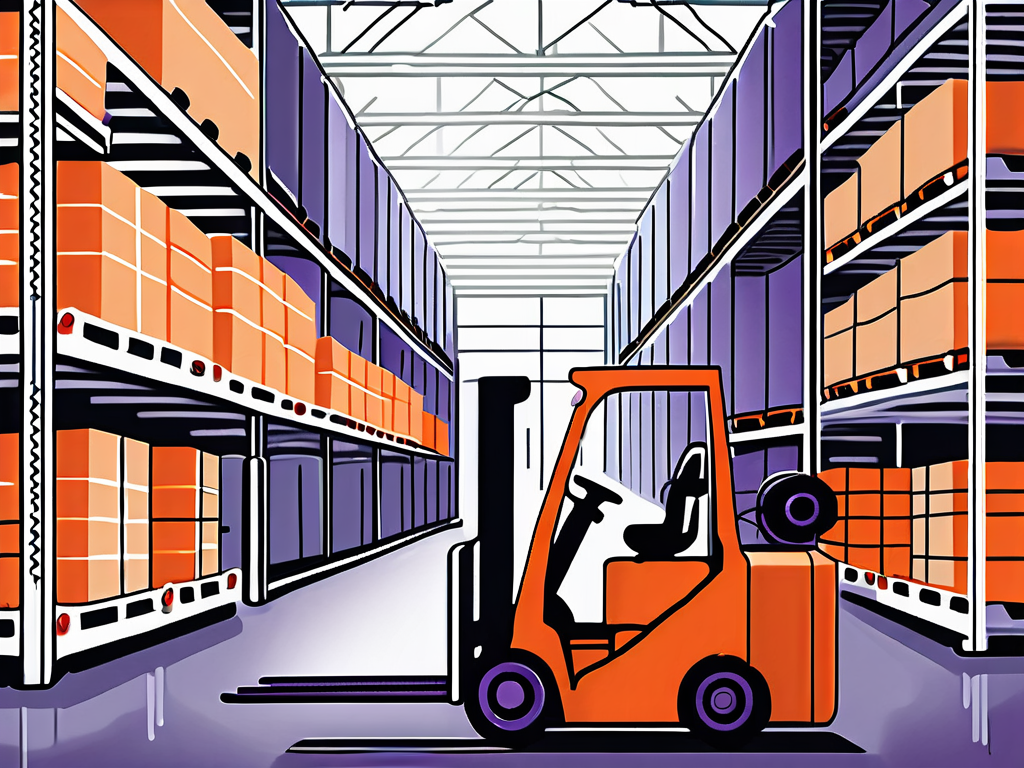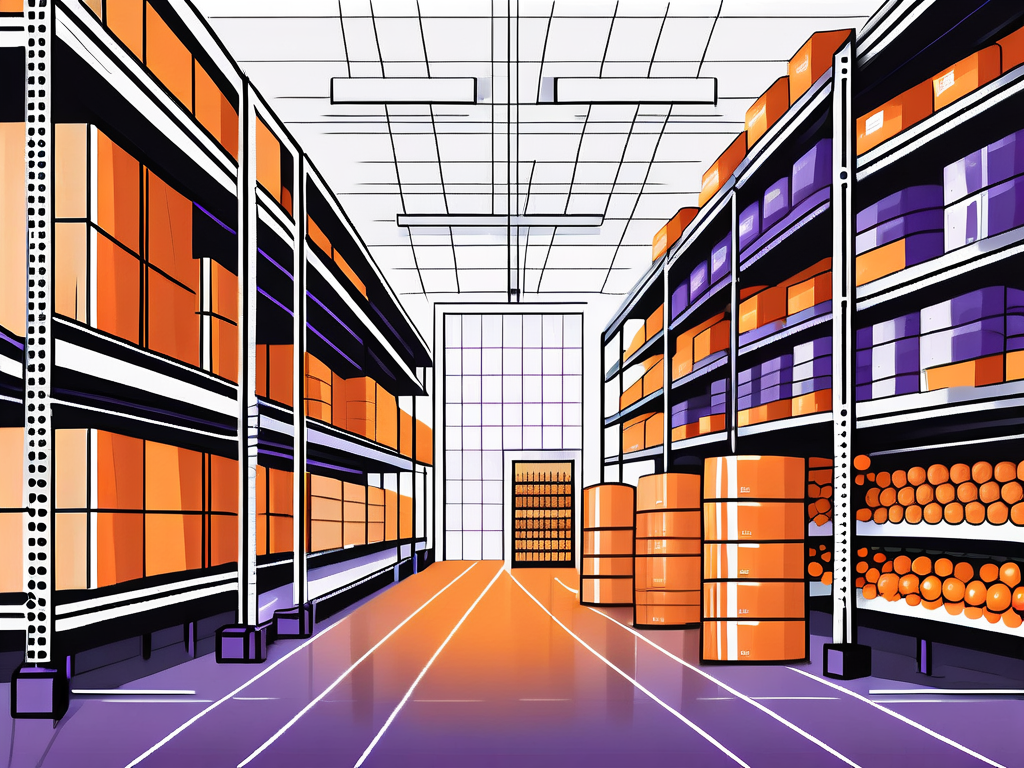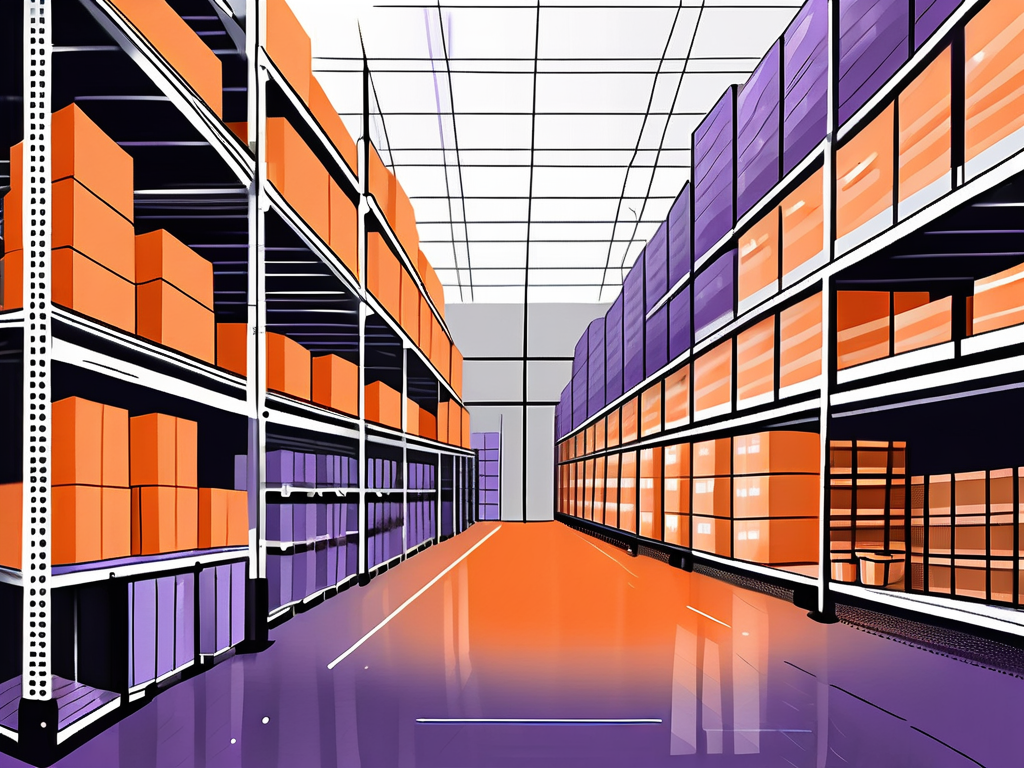Did you know that cold storage warehousing is a vital component of various industries, including food production, pharmaceuticals, and agriculture? With the increasing demand for temperature-controlled storage, setting up a cold storage warehouse is a smart business move.
In this article, we will guide you through the process of planning, designing, building, and operating your own cold storage warehouse. So, let’s dive in and explore the world of setting up cold storage warehousing!
Table of Contents
ToggleStep 1: Plan the Setup of Your Cold Storage Warehouse
Building a cold storage warehouse requires careful consideration and strategic planning to ensure the efficient and effective storage of temperature-sensitive goods.
When designing your cold storage facility, it’s essential to consider not only the current needs of your business but also potential future growth. Anticipating changes in your product line or inventory volume will help you create a flexible and scalable storage solution that can adapt to evolving demands.

Identifying Your Storage Needs
To begin, assess the specific storage needs of your products. Consider the types of goods you will be storing, whether they need temperature-controlled storage, and the volume of inventory you expect to handle.
Make a detailed inventory list and determine the appropriate storage capacity, layout, and equipment needed.
This will streamline your warehouse operations and ensure efficient space utilization. Implementing a warehouse management system can also help track inventory levels, expiration dates, and storage locations for improved inventory control.
Selecting the Right Location
Choosing the right location for your cold storage warehouse is crucial. Look for areas with easy access to transportation networks, such as highways, ports, and airports.
Consider proximity to your suppliers and customers to minimize transportation costs and delivery times. Additionally, check for the availability of utilities like electricity and water to support your refrigeration systems.
Evaluating the local climate and weather patterns is also important, as extreme temperatures or environmental conditions can impact the efficiency of your cold storage operations.
Step 2: Design Your Cold Storage Warehouse
With your storage needs and location identified, it’s time to design your cold storage warehouse. Planning and executing a well-thought-out design is crucial for the efficiency and success of your operations.

When designing your cold storage warehouse, it’s important to also consider the future growth of your business. Incorporating scalability into your design can save you time and money down the line. Think about how you can easily expand your storage capacity or make modifications to accommodate changing inventory needs.
Layout Considerations
A well-designed layout is essential for optimizing workflow and maximizing storage capacity.
- Consider the flow of goods, ensuring efficient movement from shipping and receiving to storage, and eventually to shipping. A logical layout can streamline operations and reduce the risk of errors in handling and inventory management.
- Furthermore, think about implementing a zoning system within your warehouse to categorize products based on storage requirements or frequency of access. This can help in better organizing your inventory and improving overall efficiency in picking and stocking processes.
- Organize your warehouse in a way that minimizes the distance traveled by forklifts and personnel, reducing operational costs and increasing productivity.
- Incorporate sufficient docking areas for loading and unloading of goods.
Efficient utilization of space can lead to higher storage density and better use of available square footage.
Temperature and Humidity Control
Temperature and humidity control are critical factors in cold storage warehousing. Install high-quality refrigeration systems capable of maintaining precise temperature levels for various storage areas.
Proper temperature control is essential for preserving the quality and safety of perishable goods throughout their storage duration.
Additionally, implement effective insulation techniques to minimize temperature fluctuations and reduce energy consumption. By sealing gaps and ensuring proper insulation, you can create a more energy-efficient environment within your cold storage warehouse.
Regularly monitor and adjust humidity levels to prevent condensation and ensure optimal product flow and integrity. Maintaining optimal humidity levels is vital for preventing moisture-related issues that can compromise the quality of stored goods.
Step 3: Build Your Cold Storage Warehouse
With your plans and designs in hand, it’s time to turn your vision into reality. Building a cold storage warehouse requires careful consideration of various factors to ensure optimal functionality and efficiency.

One crucial aspect to focus on is the layout of the warehouse. Efficient space utilization is key to maximizing storage capacity while allowing for easy access to goods. Consider implementing a layout that minimizes the distance traveled by workers and vehicles within the warehouse, streamlining operations and reducing labor costs.
Construction Materials and Insulation
Choose construction materials that provide optimal insulation for your cold storage warehouse. High-quality insulation minimizes temperature leakage and improves energy efficiency. Investing in superior insulation not only helps in maintaining the desired temperature levels but also contributes to environmental sustainability by reducing energy consumption.
Consider using:
- insulated panels
- reinforced concrete
- or other suitable materials to create a well-insulated envelope
These materials offer durability and longevity, ensuring that your cold storage warehouse remains efficient for years to come. Additionally, incorporating energy-efficient practices in the construction process can lead to cost savings in the long run.
Installing Refrigeration Systems
Installing reliable refrigeration systems is paramount for the success of your cold storage warehouse. Consult with industry professionals to obtain the most suitable systems for your storage needs. Properly installed and maintained refrigeration systems are essential for preserving the quality and safety of stored goods.
Ensure that your refrigeration systems are properly sized to handle the anticipated storage capacity and maintain consistent temperatures. Implementing temperature monitoring and control systems can help in regulating conditions within the warehouse, ensuring that perishable items remain fresh.
Regularly maintain and service these systems to prevent breakdowns and prolong their lifespan, ultimately saving you from costly repairs and replacements in the future.
Step 4: Operate Your Cold Storage Warehouse
With your cold storage warehouse fully constructed, it’s time to put your plans into action. But before you dive in, there are a few important aspects to consider that will contribute to the success of your operation.
Safety Measures and Regulations
Implementing safety measures and adhering to regulations is essential in operating a cold storage warehouse. Train your staff on proper handling procedures, including:
- food safety protocols
- hazardous material handling
- emergency response
This ensures that your team is equipped with the knowledge and skills necessary to maintain a safe working environment.
Regularly inspect your facility for potential hazards and comply with all relevant regulations, such as fire safety codes and occupational health guidelines. By doing so, you not only protect your employees but also safeguard your valuable inventory. Remember, prevention is always better than dealing with the consequences of an accident or non-compliance.
Maintenance and Energy Efficiency
Maintaining your cold storage warehouse and optimizing energy efficiency are ongoing responsibilities that should not be overlooked. Regularly clean and service your refrigeration systems to prevent malfunctions and ensure optimal performance. This will help you avoid costly repairs and potential inventory loss due to temperature fluctuations.
Conduct routine inspections of your warehouse to identify and address any issues promptly. This includes checking for proper insulation, monitoring temperature controls, and ensuring that all equipment is functioning correctly. By staying proactive, you can prevent small problems from escalating into major disruptions.
Set Up Your Cold Storage Warehouse Seamlessly
Setting up a cold storage warehouse is an essential undertaking for businesses dealing with temperature-sensitive products. Thoughtful planning and design, along with consideration for future growth, are key to creating a successful facility.
With these insider tips, you’re well-equipped to establish a cold storage warehouse that supports your business goals and evolves with your needs. Take these steps today and ensure your operations are prepared for long-term success.






